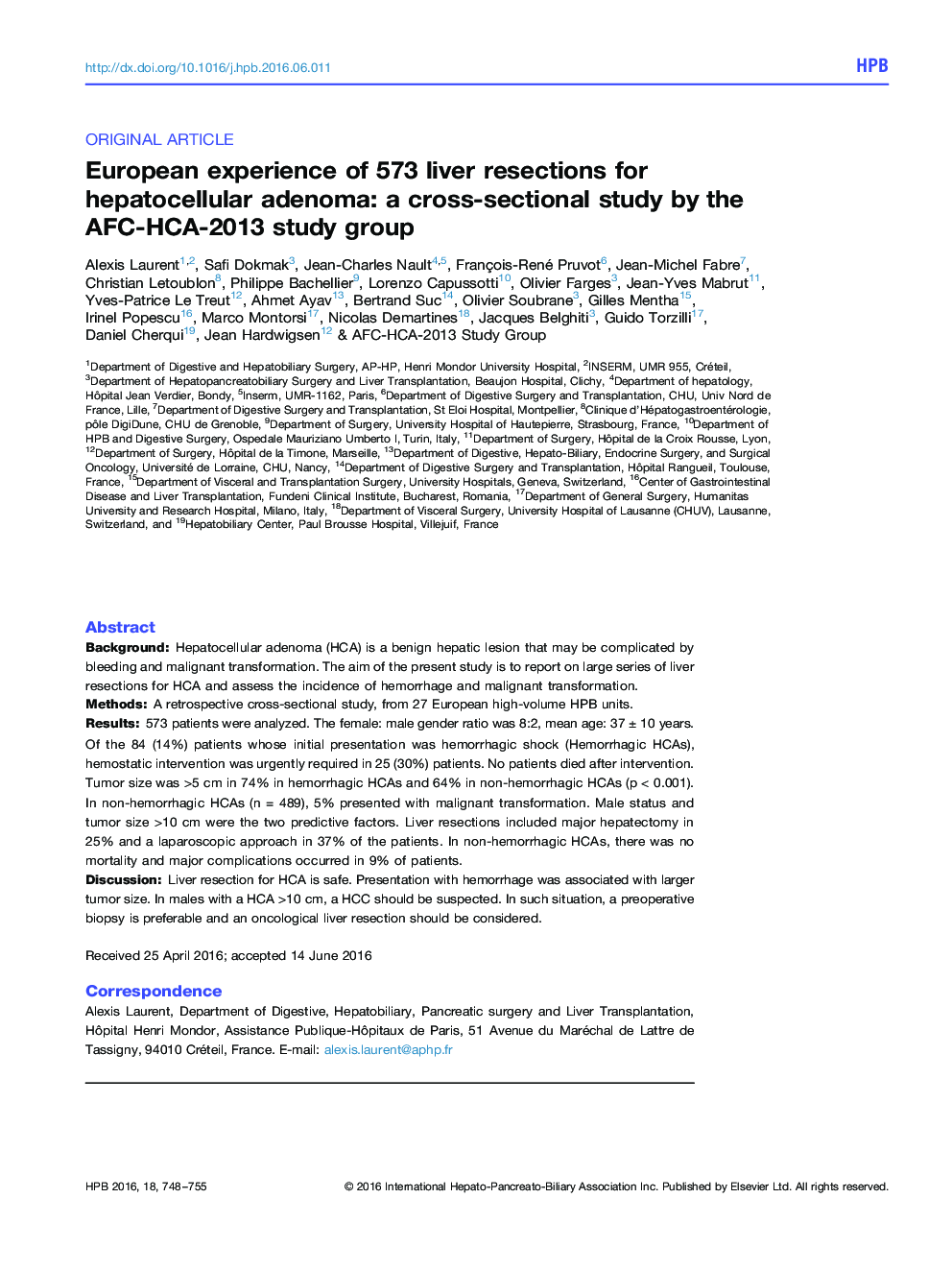| Article ID | Journal | Published Year | Pages | File Type |
|---|---|---|---|---|
| 3268427 | HPB | 2016 | 8 Pages |
BackgroundHepatocellular adenoma (HCA) is a benign hepatic lesion that may be complicated by bleeding and malignant transformation. The aim of the present study is to report on large series of liver resections for HCA and assess the incidence of hemorrhage and malignant transformation.MethodsA retrospective cross-sectional study, from 27 European high-volume HPB units.Results573 patients were analyzed. The female: male gender ratio was 8:2, mean age: 37 ± 10 years.Of the 84 (14%) patients whose initial presentation was hemorrhagic shock (Hemorrhagic HCAs), hemostatic intervention was urgently required in 25 (30%) patients. No patients died after intervention. Tumor size was >5 cm in 74% in hemorrhagic HCAs and 64% in non-hemorrhagic HCAs (p < 0.001).In non-hemorrhagic HCAs (n = 489), 5% presented with malignant transformation. Male status and tumor size >10 cm were the two predictive factors. Liver resections included major hepatectomy in 25% and a laparoscopic approach in 37% of the patients. In non-hemorrhagic HCAs, there was no mortality and major complications occurred in 9% of patients.DiscussionLiver resection for HCA is safe. Presentation with hemorrhage was associated with larger tumor size. In males with a HCA >10 cm, a HCC should be suspected. In such situation, a preoperative biopsy is preferable and an oncological liver resection should be considered.
